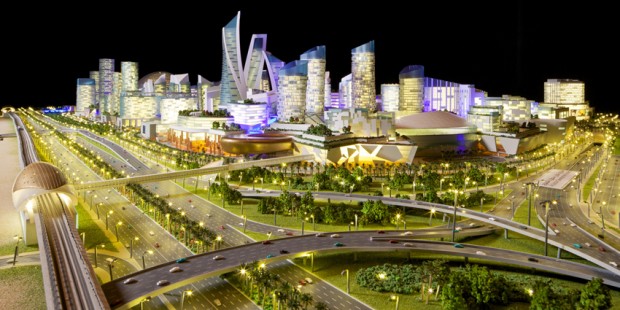Franchising, retail, business

09/07/2014
Dubai Holding, the investment vehicle of the emirate’s ruler, will need Dhs25 billion ($6.8 billion) to build an entertainment district that will include the world’s largest shopping mall, its chief executive said on Tuesday.
Dubai’s ruler Sheikh Mohammed bin Rashid al-Maktoum announced on Saturday plans to build the “Mall of the World”, encompassing an eight million square foot mall connected to a theme park, 100 hotels and serviced apartment buildings with 20,000 rooms.
The plans, and other new building projects, have led some analysts to warn that Dubai risks overbuilding again as it did a decade ago, culminating in its 2009 debt crisis.
Chief executive Ahmad bin Byat, however, told Reuters that he believed there was demand for such projects.
“The way things are growing I think we are barely coping with the demand … tourism is growing in Dubai,” Byat said in an interview at the group’s headquarters.
The “Mall of the World” entertainment district will including air-conditioned streets, according to the press release. The whole project will be built over 10 years and the funds will be raised gradually over that period, Byat said.
“That (Dhs25 billion) is how much it will cost when it’s ready. That is in about 10 years so we are talking about a requirement of about Dhs2.5 billion every year for the next 10 years,” he said.
“This is a long-term project and we are betting strongly on Dubai,” he said, adding that the size of the entire project would be in the range of 48 to 50 million square feet.
At least half of the funds will come from internal resources, Byat said, and the rest will be accumulated through the debt market, sales of some parts of the project, revenue from leasing, and partnerships.
However, he did not specify whether talks have begun with banks on financing the project.
The first phase of the project will focus on the retail aspect, including the mall, and is expected to be ready in three years. Tenders for the project will go out in about six months.
Dubai is still recovering from its 2009 debt crisis.
Dubai Holding was one of the state-linked entities that borrowed heavily from banks to fund growth and acquisitions during the boom years from 2006-08 and was hit when a property bubble burst. Its Dubai Group unit reached a final deal with creditors in January to restructure its $10 billion debt, the last major hangover from the emirate’s financial crisis.
A strong rebound in tourism and trade in Dubai has prompted property firms to announce a raft of new housing, retail and hospitality projects.
However, the International Monetary Fund has repeatedly warned Dubai of another possible boom-bust cycle and called for tighter measures to counter property speculation.
ASSET SALES
Dubai state-linked firms, facing debt repayments of more than $92 billion over the next five years according to the IMF, have been selling off assets to raise cash.
Byat said that Dubai Group and Dubai Holding’s private equity arm, Dubai International Capital (DIC), which face debt maturities in the coming years, are both working on specific asset disposal plans.
They include DIC’s plans to sell British engineering aerospace group Doncasters and German alumina products maker Almatis, he said.
“I know the sale process is underway but don’t know details. They don’t have to sell before 2017,” he said, referring to a five-year $2.5 billion debt deal agreed by DIC with creditors in April 2012.
“The value of these assets has grown now,” he said.
At one stage, DIC was said to be planning to sell Doncasters and Almatis as part of an auction with German-based packaging group Mauser. In the end it sold Mauser on its own, in May, to private equity firm Clayton Dubilier & Rice (CD&R) for about $1.7 billion, one of the largest asset disposals by a state-owned Dubai investment fund since the debt crisis.